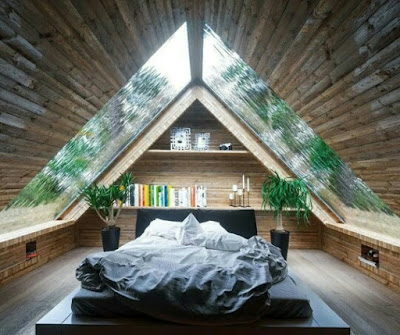If You Can't Build It, Don't Design It
Clean Bed - If You Can't Build It, Don't Design It. Did you ever wonder where the term "unrealized project" came from? It's a very common term thrown around referring to projects that were designed, but never built. My theory is that someone "didn't realize there was a budget involved" describes the most common reason for these projects to not be built.
I had a structural teacher, a Structural Engineer by trade, that used to tell us, "If you can't build it, don't design it". Now, at the time, I just applied that statement to the design of the structure, but sometime during my 30+ years of practice, I have found that is one of the most profound statements I've ever heard. It's universal. It isn't a statement that can only be applied to structure, as it was first delivered to me, but to the entire design process.
Whether it be the structure, finance, aesthetics, mechanical, etc..., they all have characteristics that dictate the limitations of each of these systems. When you try to force an idea into a limited shape, kind of like putting a round peg in a square hole, it doesn't work. I've seen a number of designers/Architects still force it and are proud of the fact they made it work. Did they? Just because it may appear to work on paper, doesn't mean it does in the field, and if it does, it usually means cost overruns. Then the budget goes over, can't be funded, and becomes an "unrealized project".
This isn't just something that occurs during the design of a house. Think about how many pet projects, some with great intentions, that never get finished. How many "Green" or alternative fuel projects never happen because someone didn't want to realize there was a budget involved. Donations are a one time funding source, self-sustaining projects live on their own for as long as they are profitable. Why fight it...embrace it.
One of the misconceptions of energy efficient design is that it can't be cost effective. That can't be further from the truth. In one of my previous articles regarding the use of the "System Approach to design" I discussed this in greater detail. If the designer approaches the design as a system instead of individual parts, where by being part of a system means every decision made on an individual part effects all the other parts and systems, one can easily design an energy efficient home and make it very cost effective. I have 30+ years of experience proving this. The problem is, most designs are a series of "add-ons" in the name of energy efficiency. Instead of incorporating each decision into the design considering the effect it has on all the other parts of the design, there is the tendency to just add more of this and that in the name of energy efficiency. All this does is add cost, probably doesn't do much for the energy efficiency since it usually leaves to many weak links, and puts the project over budget. Can you say "unrealized"?
I was asked once what it took to get creative people to develop creative ideas. I thought the answer was easy. It takes a challenging problem, and money. The person who asked the question thought I was being cynical, but I want. On the contrary, I was being practical. There are all kinds of great ideas for development, but for some reason the promoters are unfamiliar with the term "budget", or treat the funding need as some type of disease.
Bottom line, if you can't afford it, it won't get built, and if you can't build it, don't design it. If you don't follow this simple logic, you will be forever frustrated, but have a rather large volume of beautiful unrealized projects.


Comments
Post a Comment